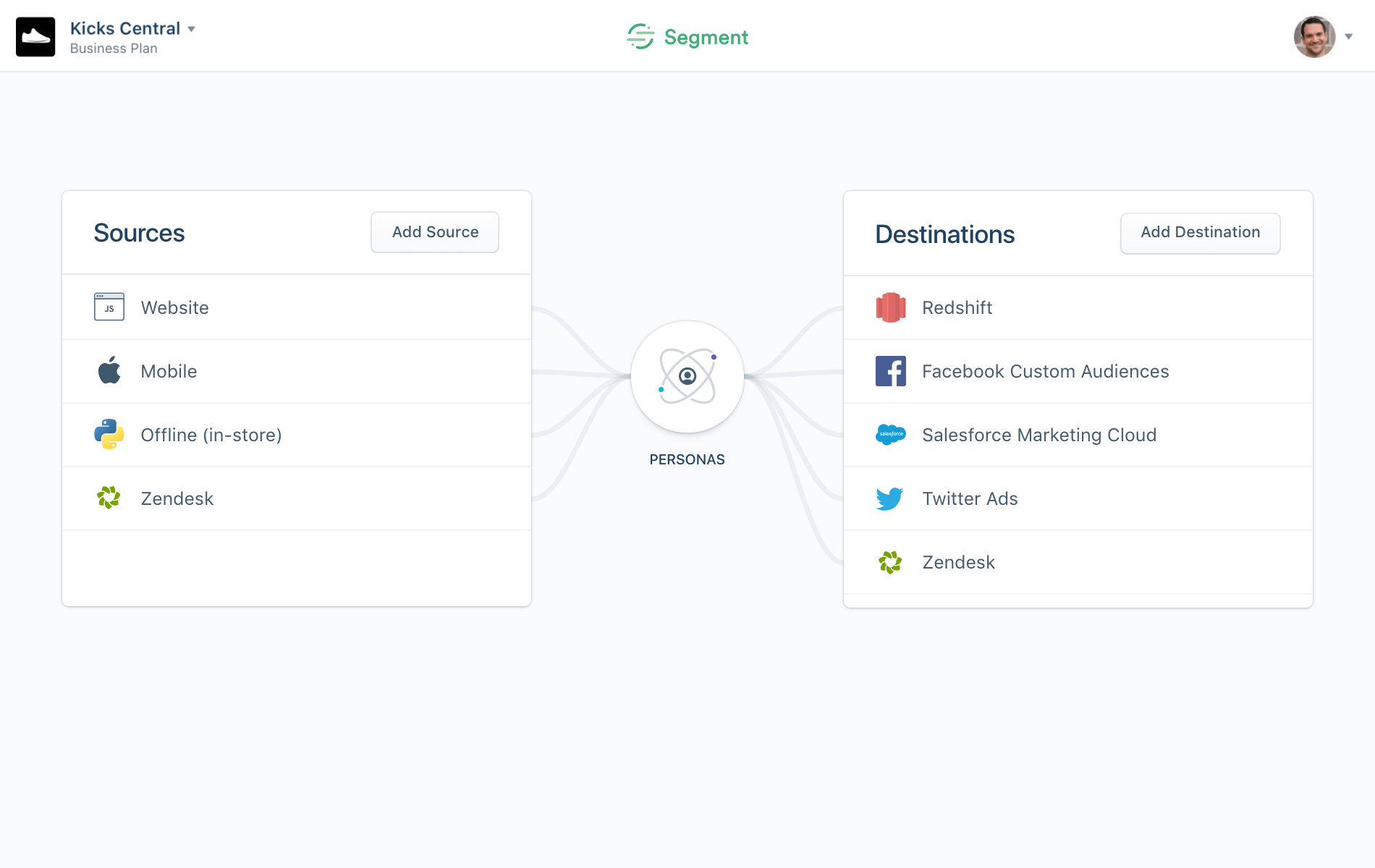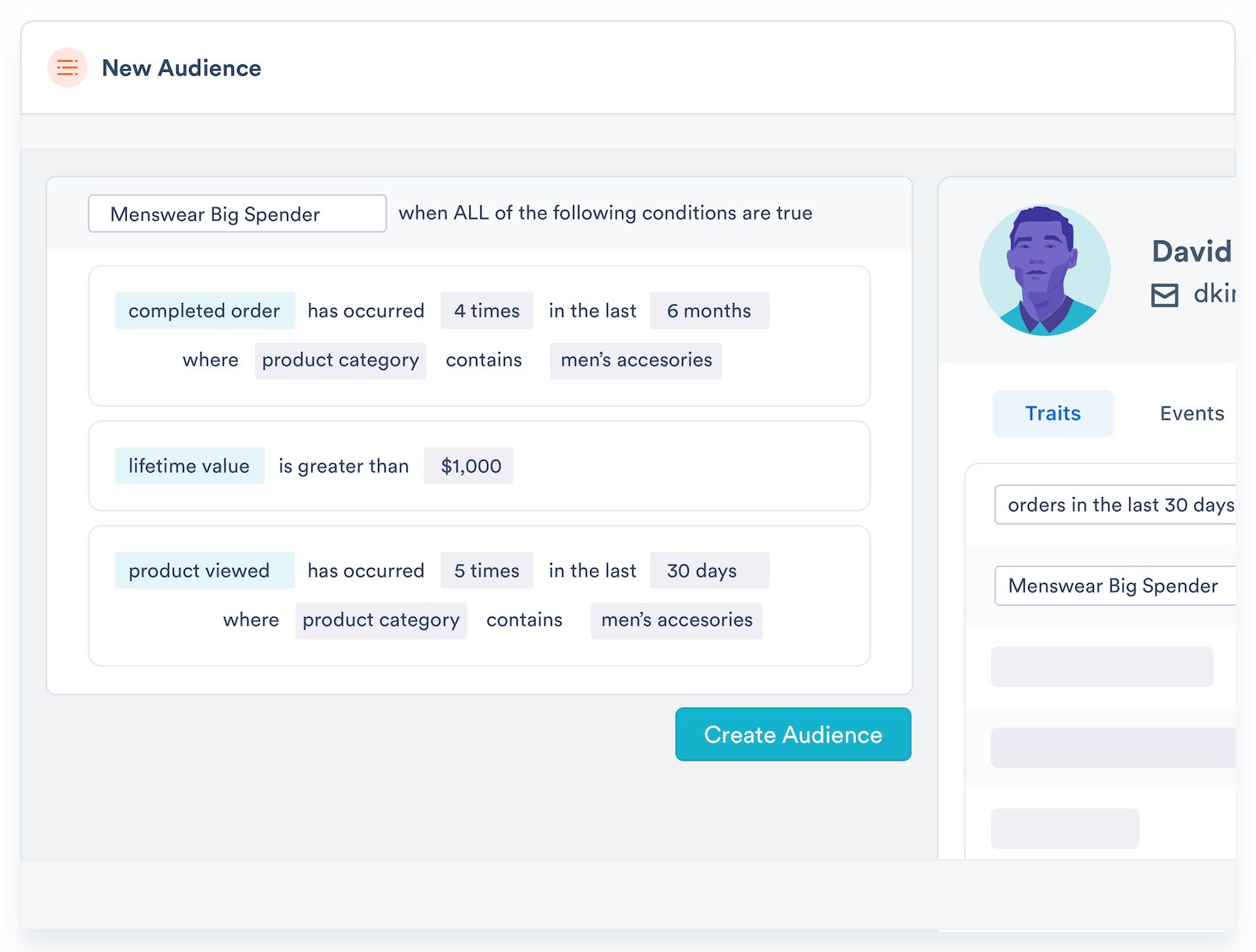Segment launches Personas to capture its ecosystem data into customer profiles
The company is advancing beyond its origin as a data switchboard as it adds to its role as a Customer Data Platform.
Segment.io began in 2012 as a data switchboard for business applications. Instead of configuring data exchange between each of your tools and the others, you could connect them all through Segment.
Over the last few years, it has evolved. Initially, for instance, it took data from sites and apps and made that available in analytical tools like Mixpanel or Google Analytics. Then it added a data warehouse, and last year it expanded data sources to include other tools, like Salesforce, help desk Zendek and payment platform Stripe.
This past July, the San Francisco-based company — which had dropped the “.io” — started evolving toward becoming a Customer Data Platform. It launched the ability to utilize user behavior captured in one tool as audience segments for another platform. Users who talked to a help desk in Zendesk about a computer problem, for instance, could become a segment for an email campaign in SendGrid about a premium computer support service.
Today, Segment is taking the next step toward becoming a customer data platform, with the invite-only beta launch of a new product called Personas. This allows a Segment-using brand to create customer profiles by merging customer data from its Segment-connected tools.
“Rather than data just flowing ephemerally,” co-founder and CEO Peter Reinhardt told me, “we’re sticking that data into a user profile.”
Of the approximately 250 supported applications, up to 50 capture user data. He describes these data sources as “sensor neurons” in Segment’s “nervous system.”
That means there’s info about customer Jane Doe’s email address and email responses in SendGrid, about her queries to the help desk in Zendesk, and her credit card payments in Stripe. Other data from various applications, or from sites and apps, might show the user’s interactions with ads, social media or push notifications, or even in a physical store.
The customer data is assembled into profiles, matched by persistent identifiers like email addresses or registered account IDs, and stored as either anonymized or identified profiles. This aggregation can then be used to extract useful traits, like a customer’s favorite product categories and average order value, or the days she is most likely to buy.
The user profiles are then made available, individually or as groups, to the implementation tools in the Segment universe, which occupy a role that Reinhardt likens to “motor neurons.” They take actions, like sending emails or ads.
The new customer data profiles, he said, are a further growth of Segment’s “brain stem,” as the company’s ecosystem becomes a working marketing entity.
The brand can set a global preference as to which data source should rule. For instance, if there’s a conflict between specific information for a given customer in SendGrid and the master customer file in Segment, the brand can specify which one should be authoritative.
Reinhardt said that competitors in the growing customer data platform (CDP) category need to be connected to the brand’s collection of data sources and implementation tools, a process that can be time-consuming and involved. By contrast, he noted, Segment’s customer data repository starts off as the center of its own ecosystem.
Contributing authors are invited to create content for MarTech and are chosen for their expertise and contribution to the martech community. Our contributors work under the oversight of the editorial staff and contributions are checked for quality and relevance to our readers. The opinions they express are their own.
Related stories
New on MarTech


